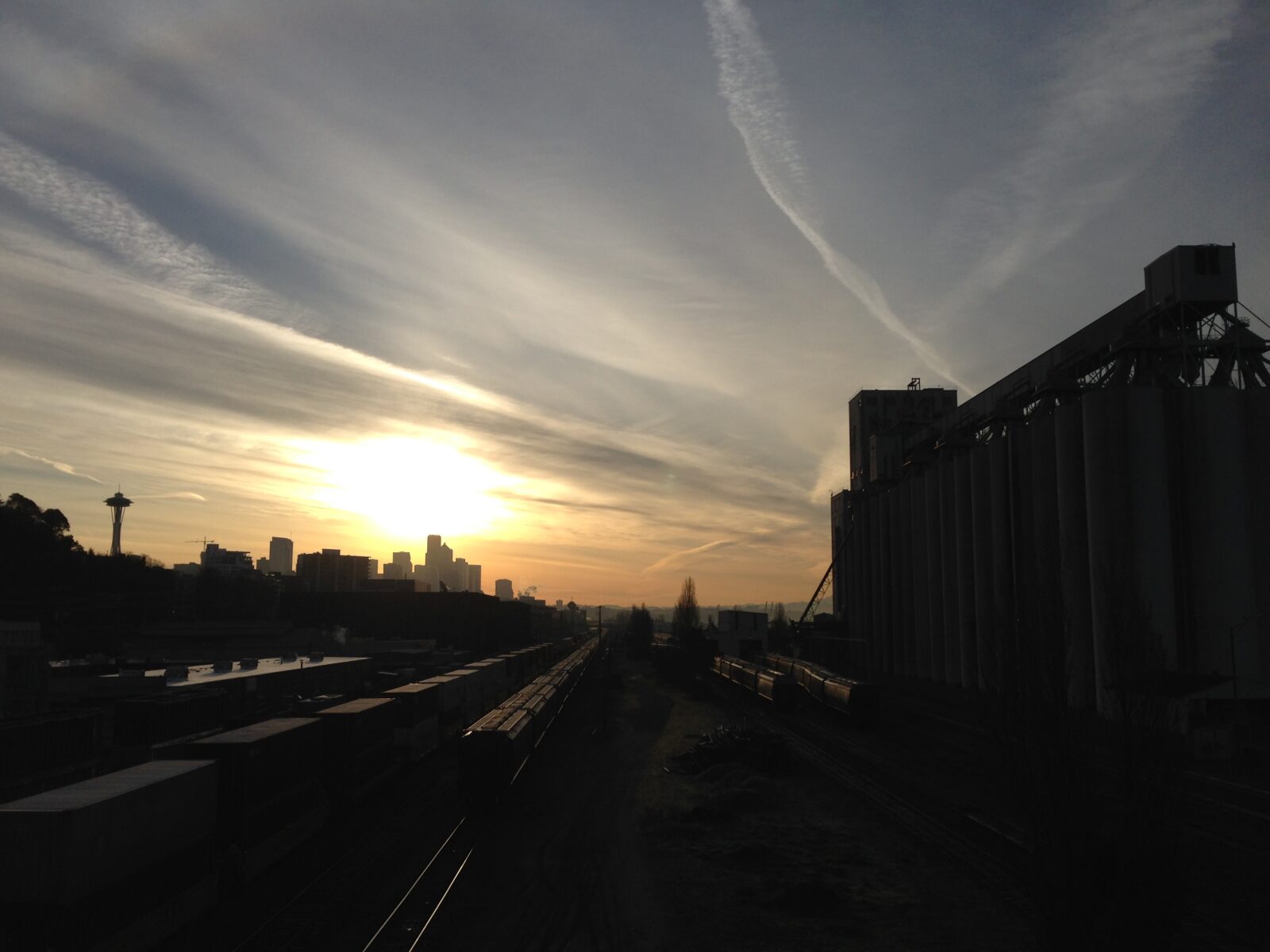Suburban practice: 30-45mph streets
Goals: Be able to drive to (and park at) Trader Joe’s then Metropolitan Market and get back home. Continue building good habits, two-way communication with parental unit in right seat

- Scanning and naming things to keep an eye on (e.g., pedestrians looking like they may cross, lights about to change, etc.)
- Lane changes.
- Left and right turns, signaling.
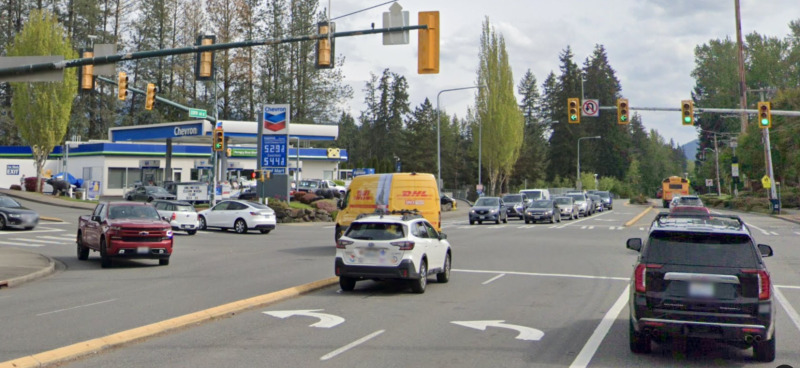
- Understand protected vs unprotected turns (labeled or otherwise).
- Additional yielding requirements (e.g., pedestrians, right turn on red and U-turns from main arterial, don’t block the fire department box, etc.)
- Traffic circles
- Smooth acceleration, braking and steering.
- Maintain safe distance
- Park at a Trader Joe’s
- Dealing with poorly-designed traffic flows
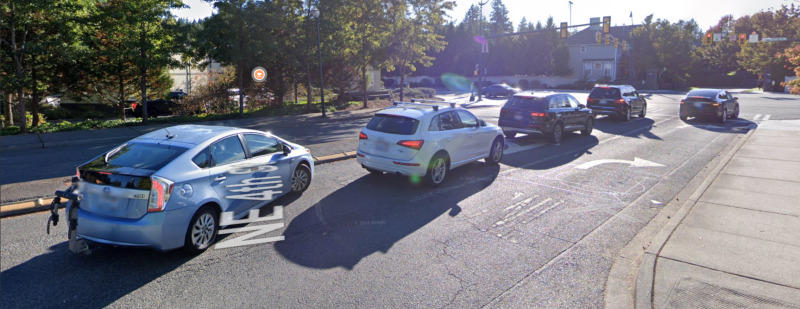
City practice:
Goals: This is indicative of the type of everyday errands you might do. The challenges include slightly faster roads, anticipation of lane changes, a couple of new circles, and going up and down a steep hill. Drive to Issaquah Dance Theater, Target, Fred Meyer and home.
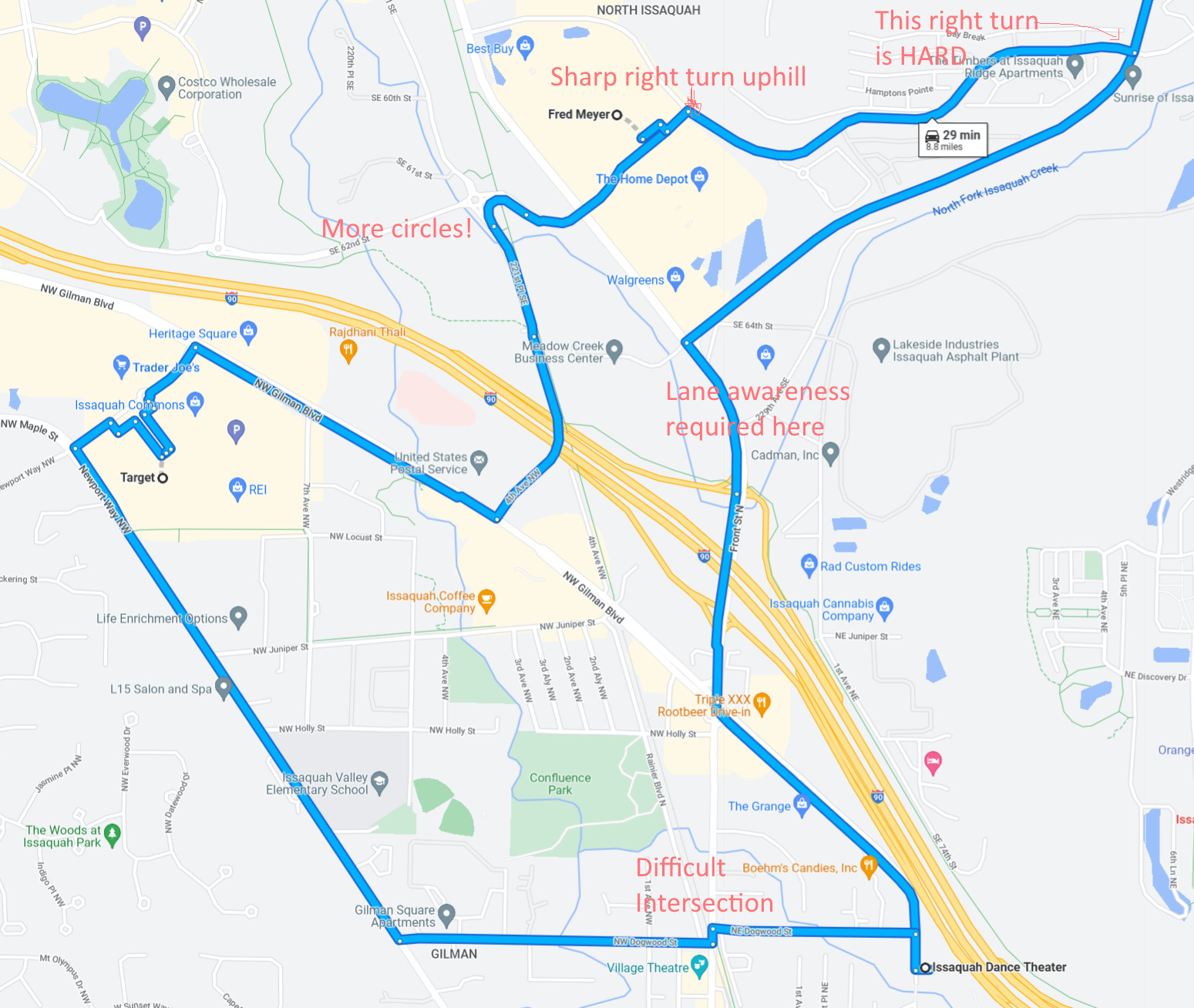
Location: Issaquah
- Navigate complex intersections.
- Anticipate lane changes and problems crossing the intersection before the light turns red.
- Merging.
- Crazy multi-lane traffic circles
- Difficult intersections.
Single-lane highway practice:
Goals: This is to be comfortable with higher speeds before we proceed onto the interstate. The roads are simple, but SR202 tops out at 50mph with two busy intersections, curves, and some uneven pavement. You’ll need more distance to stop. Additionally, due to some long hills, you’ll need to focus more on speed regulation, anticipating whether to give it more gas or brake, as appropriate. Drive to Gray Barn Nursery in Redmoond, SR202 south, then up Trossachs.
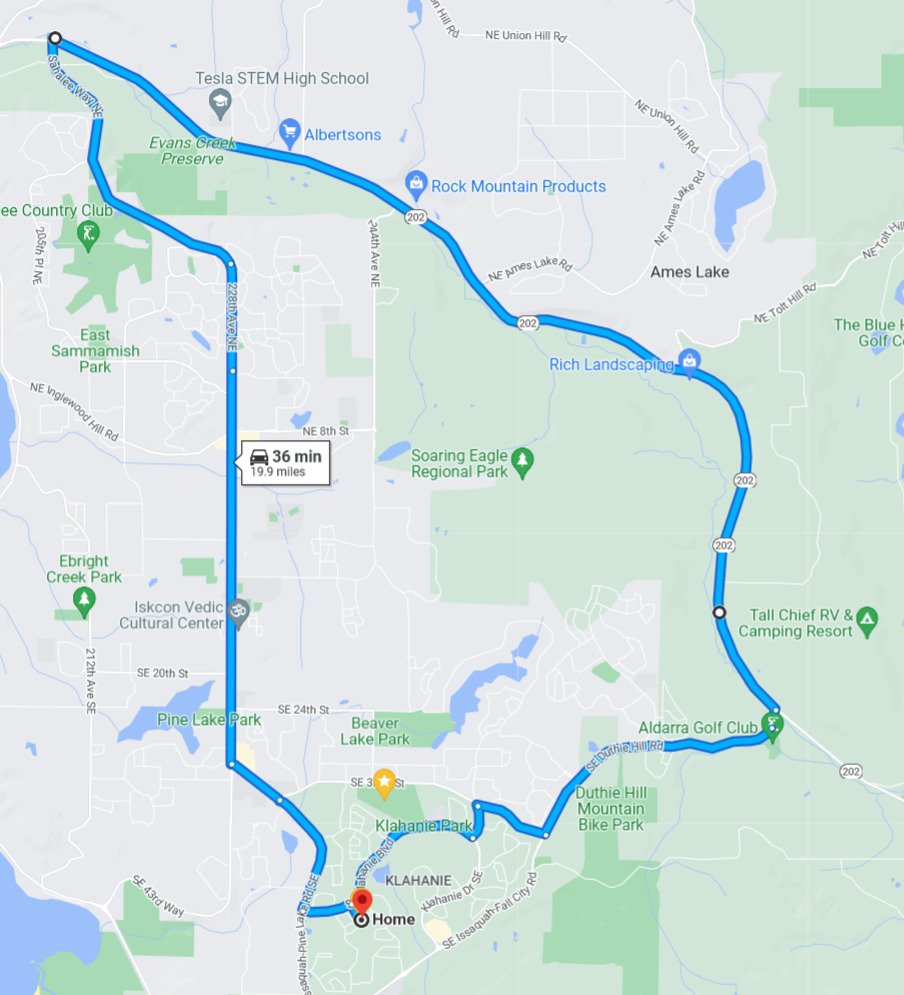
- Adjust control inputs to speed.
- Anticipate longer stops.
- Change your thinking from suburban driving so we can then move to interstates.
Multi-lane highways and interstates
Goals: On a slow Sunday morning, we’ll now work on some of the fastest and complex roads around. You’ll have to merge and exit, as well as anticipate people merging and exiting. If we see an emergency vehicle pulled over, we need to either slow down or move over a lane and give them space. Once you do this, city driving will seem chill. Drive to Bellevue then Redmond and home via I-90, I-405, SR520 and SR202.
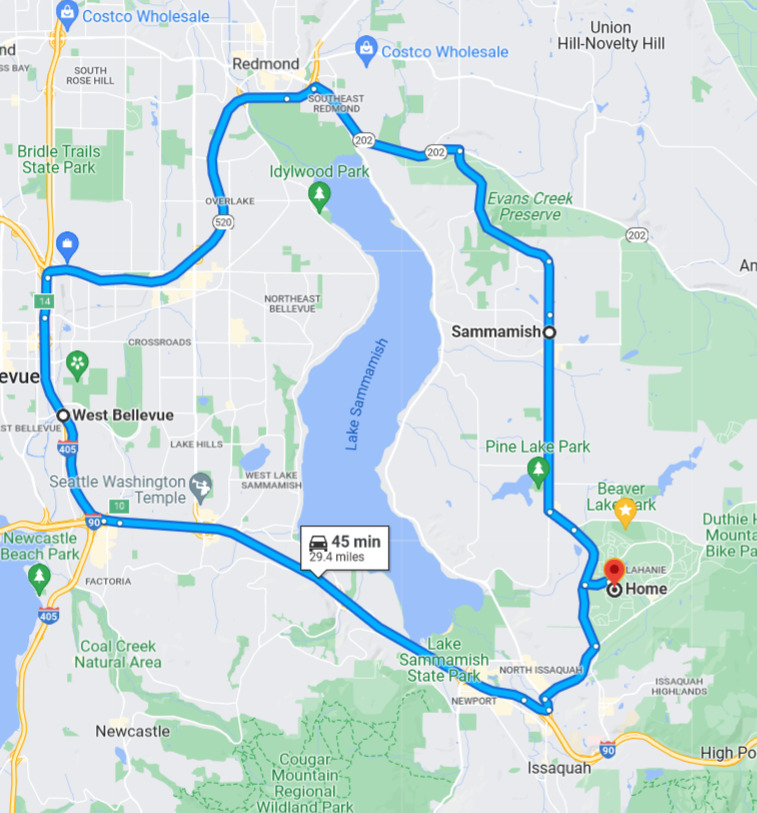
- High-aim vision.
- Maintain appropriate separation.
- Learn to interpret highway signs (see below) and road markings (e.g., solid white line, double-line, stipple, lane dots, diamond) in real-time.
- Merge onto and exit off a freeway at appropriate speeds based on helpful signage.
- Refine inputs to the car.
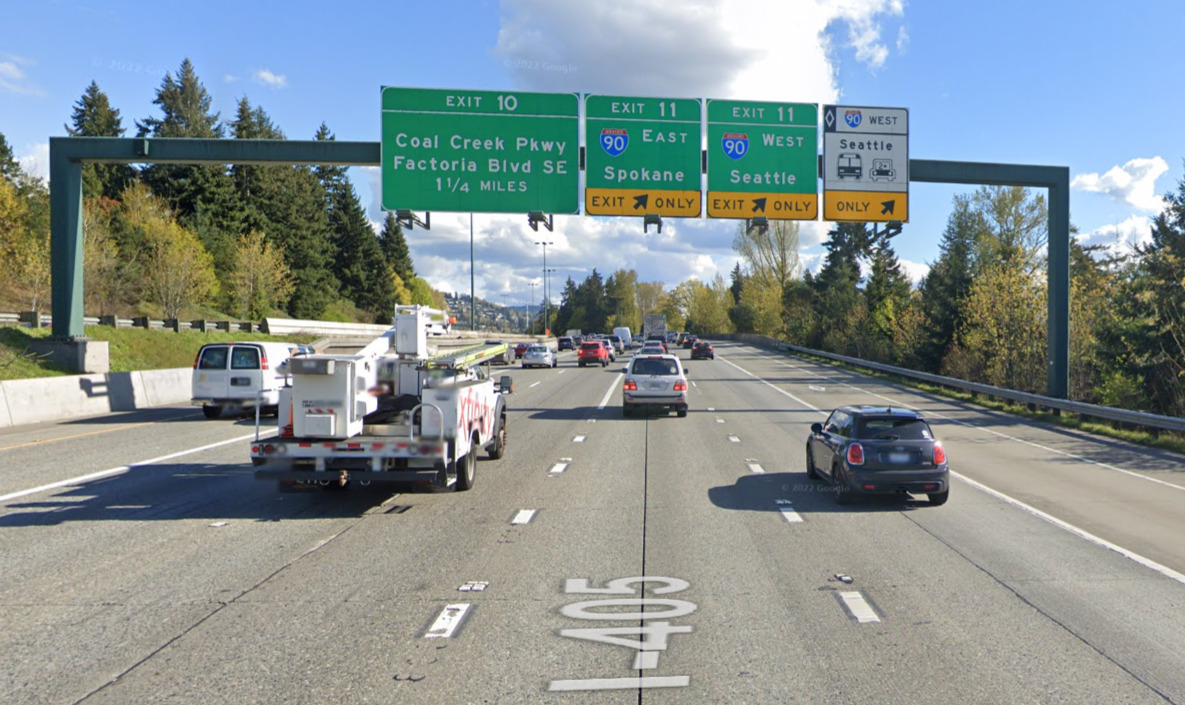
Watch out for:
- When you’re changing lanes, do not deviate in the opposite direction. This happens when people look left, but unconsciously turn the wheel right. At highway speeds, it’s very bad.
- Stay off the fog line and rumble strip. There are often hazards (disabled or emergency vehicles, road debris).
- Anticipate traffic doing abrupt things. For example, in the image above, although the signage is clear (to me, who’s driven this hundreds of times), people realize they’re in the wrong lane and cut over to the middle. Or the other way.
- Maintain appropriate speed and distance based on traffic conditions, stay in the appropriate lane. Stops will be a lot longer.
We will do some additional interstate drives so you’re familiar with the area, but it will make more sense once you have a specific place and reason to go. (For example, going to UW campus where you’ll take these roads west, then deal with crazy Seattle traffic.) We’ll break these sessions up by doing the remainder of the requirements below.
Parking, backing up and turning around:
Goals: Be able to take your dad to three geocaches located in a suburban cluster. Because parking is not always obvious, there will be plenty of opportunities to practice:
- Parallel parking
- Backing around corner (this is the same thing as backing out of the driveway, you do it all the time)
- U-turns
- 3-point turns in dead-ends
- Parking on uphill, downhill
Night driving
Goals: Apply all the above skills, but at night and in icky weather.
- Use of headlights and, when appropriate, high beams.
- Front and rear wipers. Intermittent mode. If we have very cold weather, I’ll have you learn to use the ice scraper while I am inside where it’s warm 🙂
- Dealing with oncoming traffic (with its lights on).
By the end of this, you’ll have covered everything you need for the test. Passing the test is the start. After the test, if you want to practice anything, let me know.
